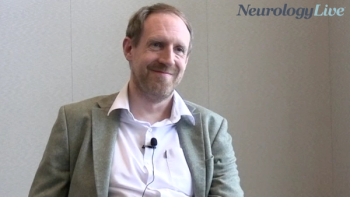Welcome to this special edition of Neurology News Network. I’m Marco Meglio.
Recently published findings from 2 nonrandomized uncontrolled trials showed that epicranial focal cortex stimulation (FCS) with the EASEE device (Precisis), a minimally invasive brain pacemaker, was associated with a significant reduction in the frequency of seizures in drug-resistant focal epilepsy. These data served as the basis for the CE certification of EASEE, which occurred in September 2022. A total of 33 individuals with drug-resistant focal epilepsy received the neurostimulation device implant following a 1-month prospective baseline period. The primary end point, a treatment response defined as a 50% reduction in seizure frequency, was achieved by 17 of the 32 participants (53.1%) at 6 months. Additionally, 4 of the 32 individuals (12.5%) had no seizures in the sixth month of active stimulation. The therapy continued to show greater efficacy as time went along, and all 6 of the early responders during the first 3 months of FCS treatment remained responders in the subsequent 3 months.
Using epidemiological data from a Chinese population collected from 1990 to 2017, investigators observed a substantial 3-fold increase in the incidence of narcolepsy during the 2009 H1N1 pandemic period. This was after ruling out a possible confounding factor of non-adjuvanted monovalent 2009 H1N1 vaccination used in the country, albeit at a low vaccination rate. The cohort included 2869 eligible patients with narcolepsy enrolled from 15 hospitals known to diagnose cases. Findings showed that the incidence of narcolepsy before, during, and after the 2009 H1N1 pandemic was 0.83, 3.07, and 1.02 per 100,000 person-years (PY), respectively. Incidence of narcolepsy decreased postpandemic, but remained slightly higher than that in the pre-pandemic period in most age groups.
After receiving a type C written meeting response and clarifying feedback from the FDA, Acasti Pharma plans to submit final clinical protocol that will ultimately allow it to move forward with a phase 3 clinical trial assessing its investigational agent GTX-104 in patients with subarachnoid hemorrhage (aSAH). In the FDA’s comments toward the company’s development plan, the agency concurred that Acasti’s GTX-104-002 pharmacokinetic study may have met the criteria for a scientific bridge. The final proposed study protocol by the FDA includes patients with all grades of severity, stratified through the Hunt and Hess scale, to be randomly assigned 1:1 to either GTX-104 or oral nimodipine. Spanning across 25-30 sites in the US, the proposed study will use safety as the primary end point, measured as a percentage of significant adverse events (AEs) of hypotension related to study drugs in both arms.
For more direct access to expert insight, head to NeurologyLive.com. This has been Neurology News Network. Thanks for watching.
































